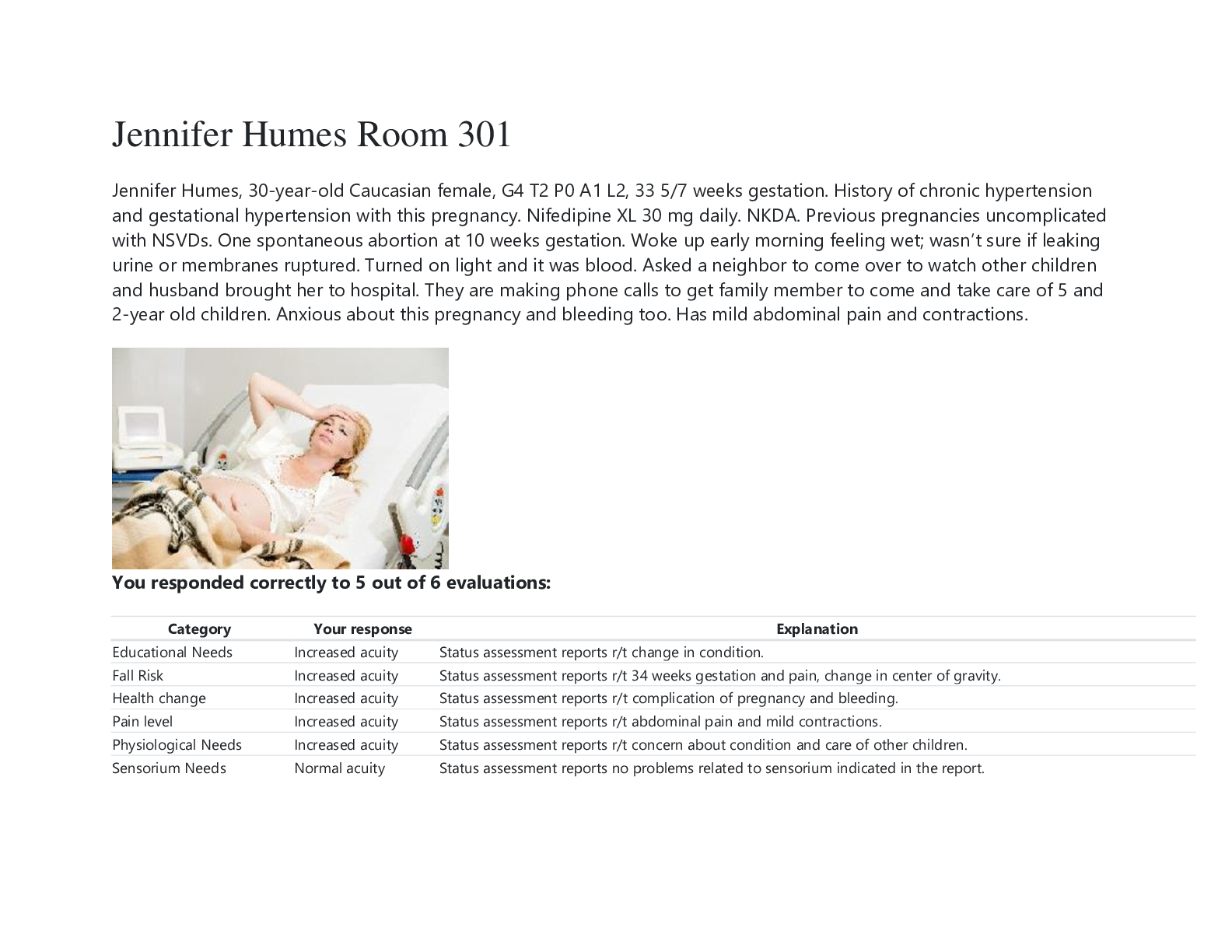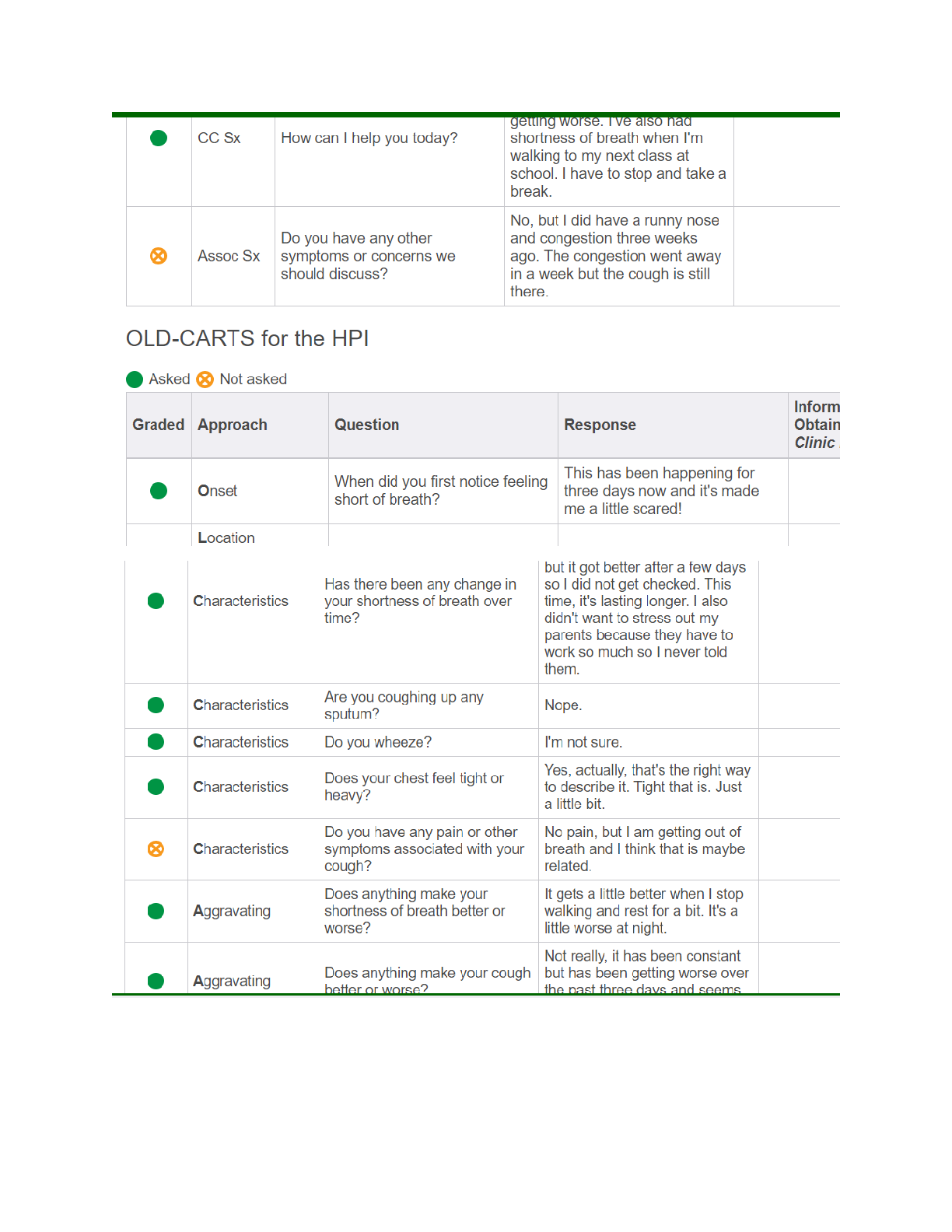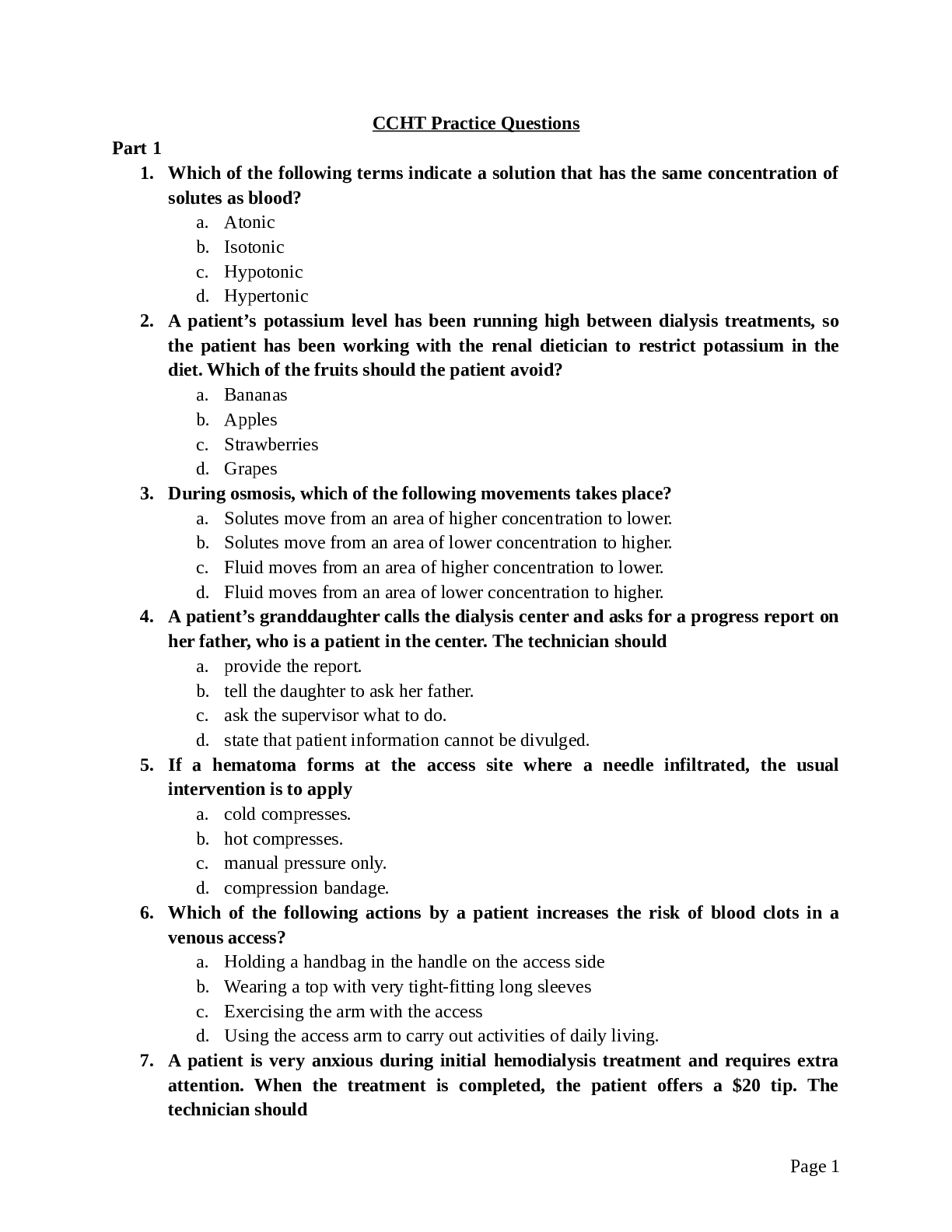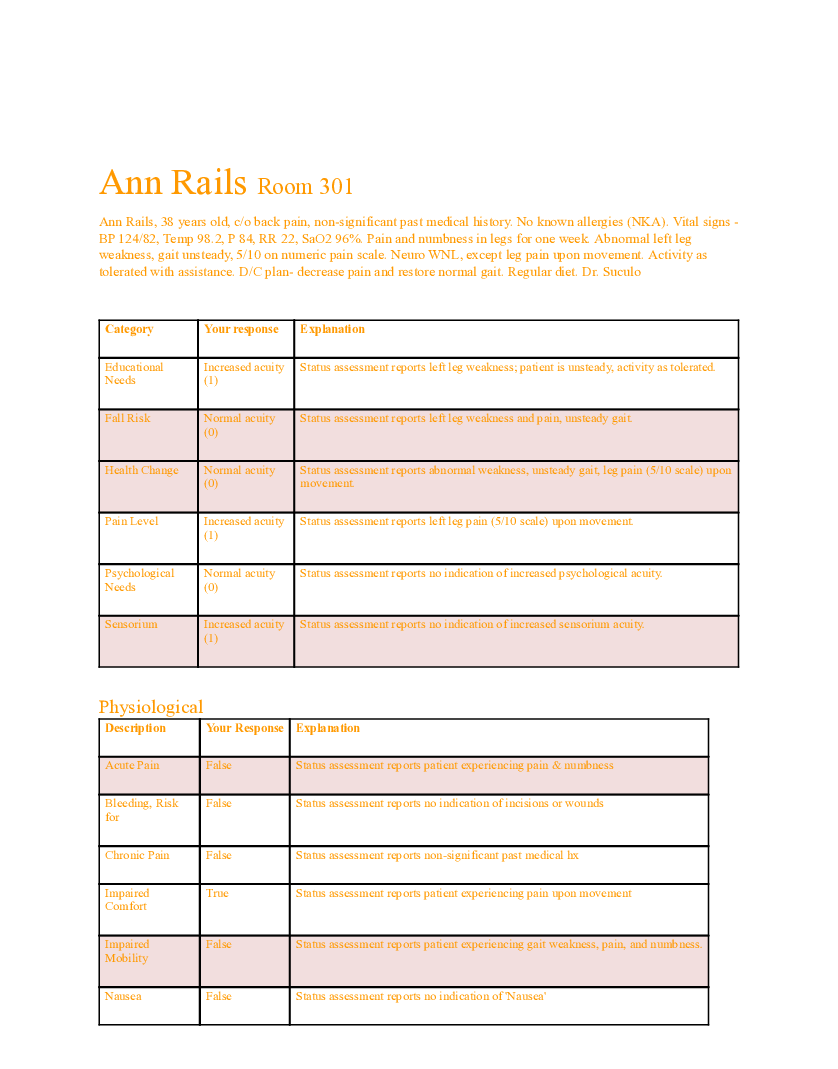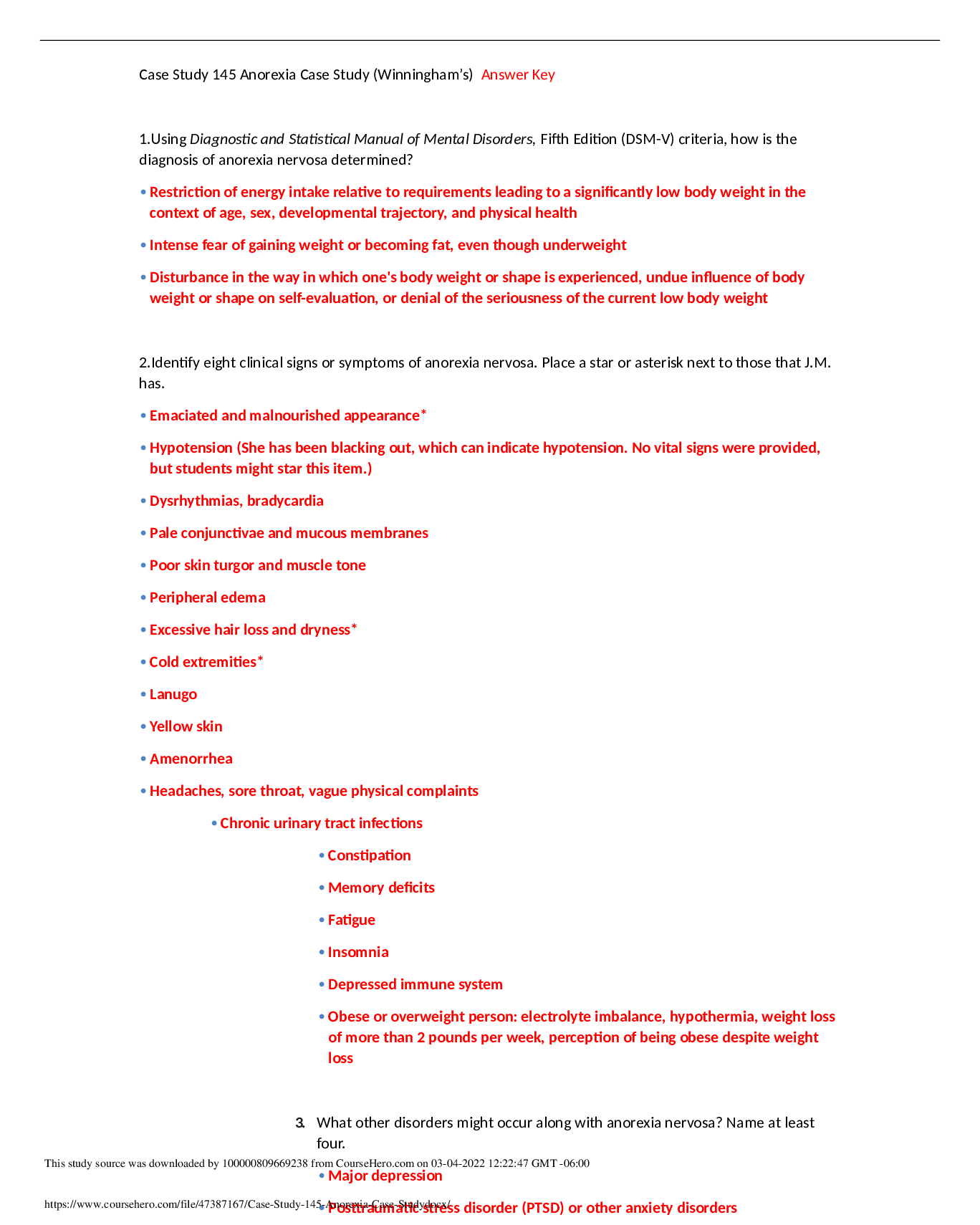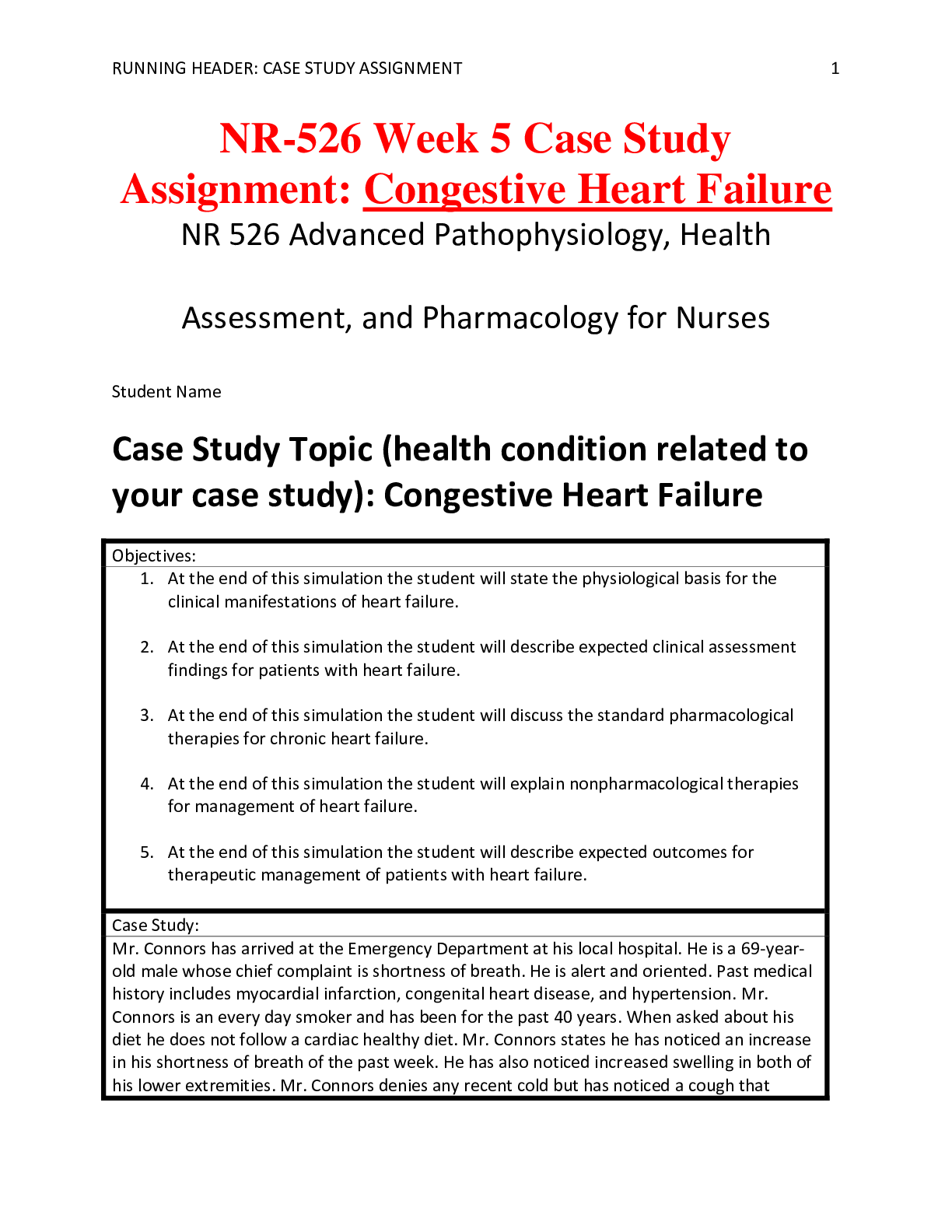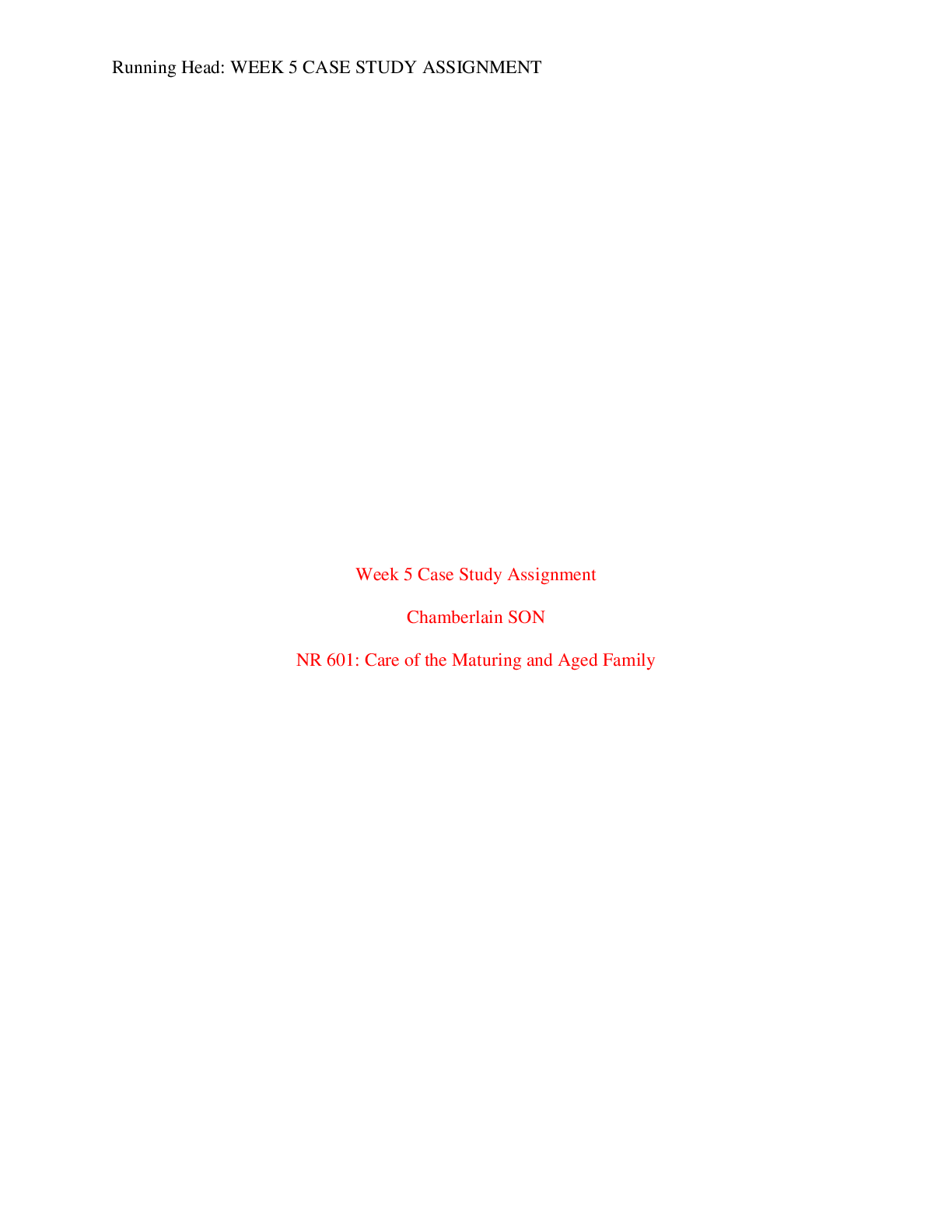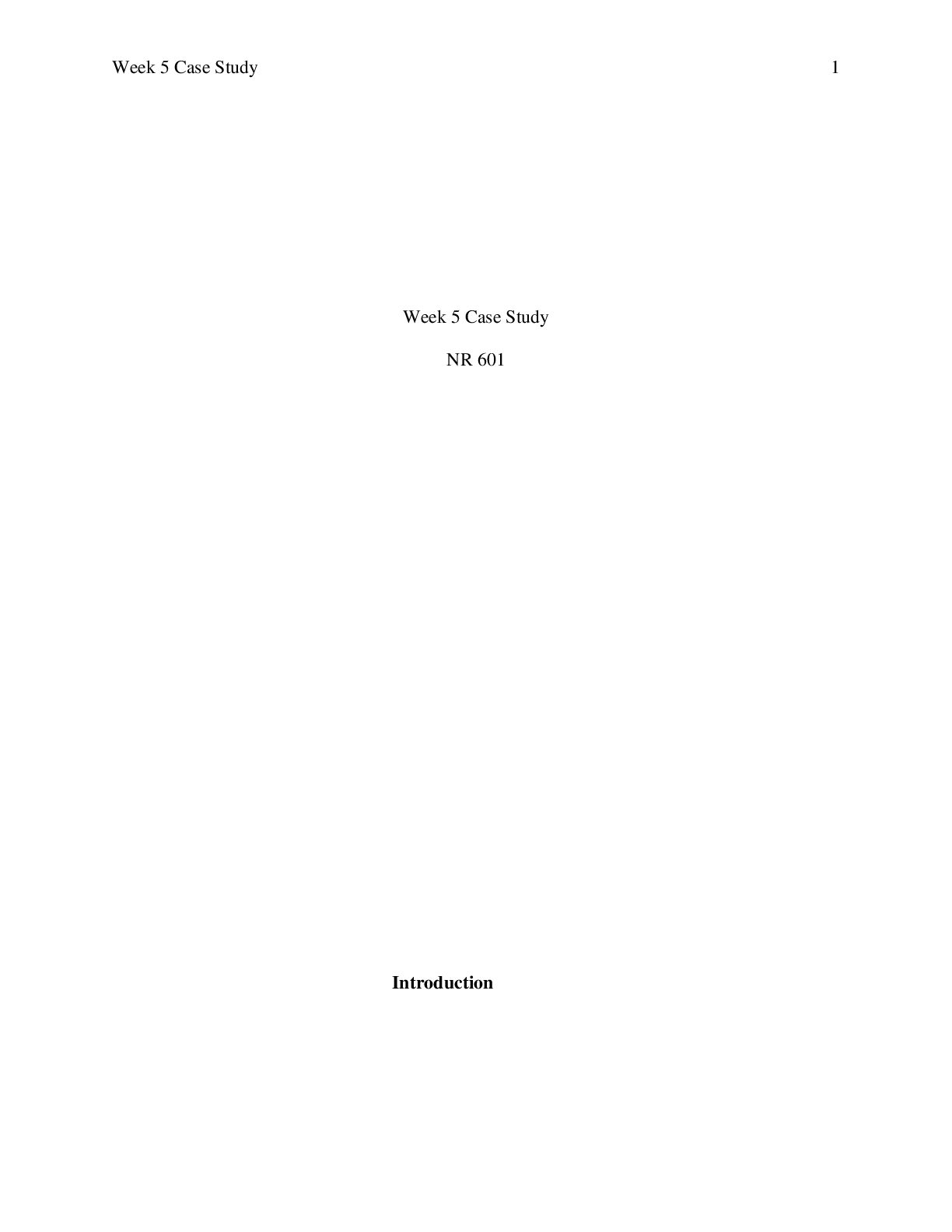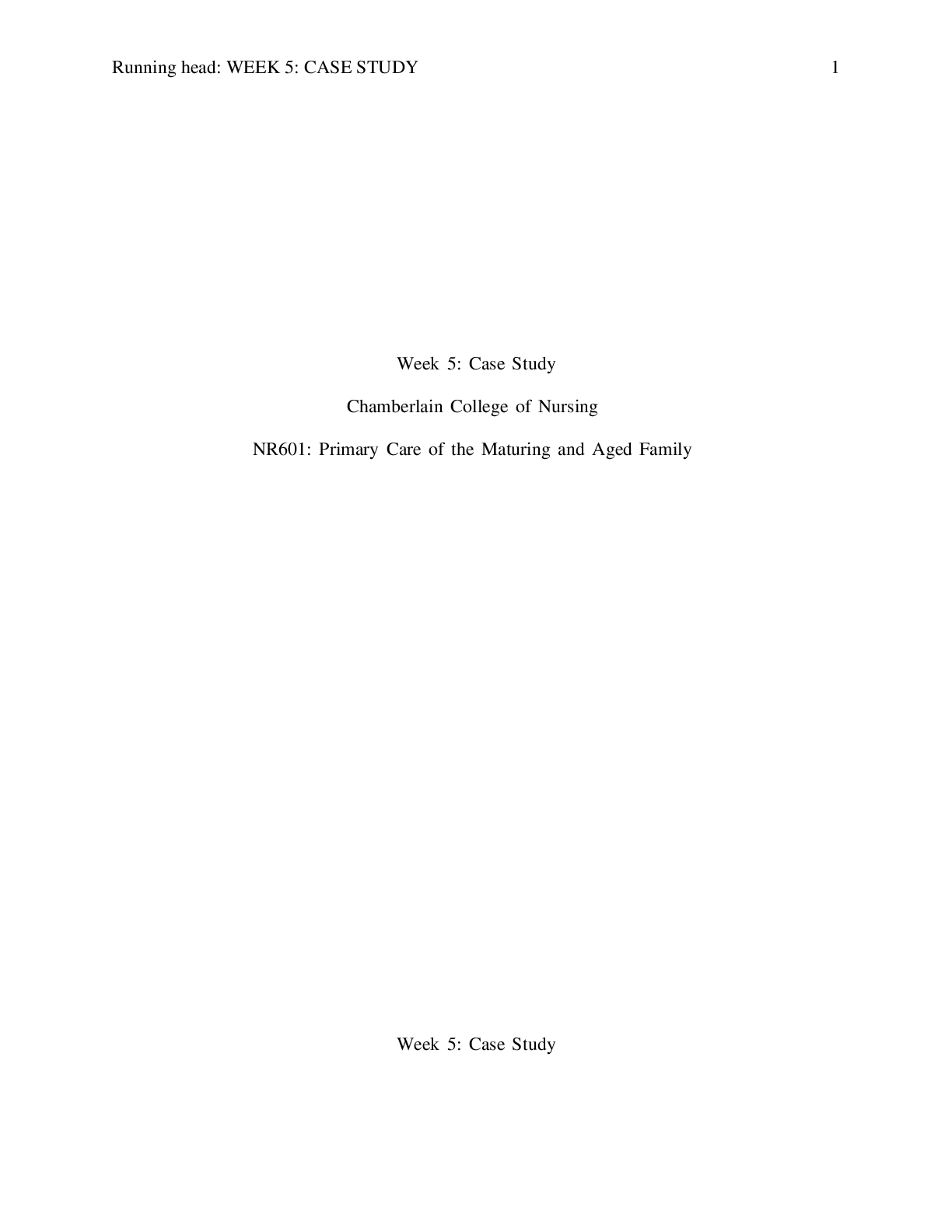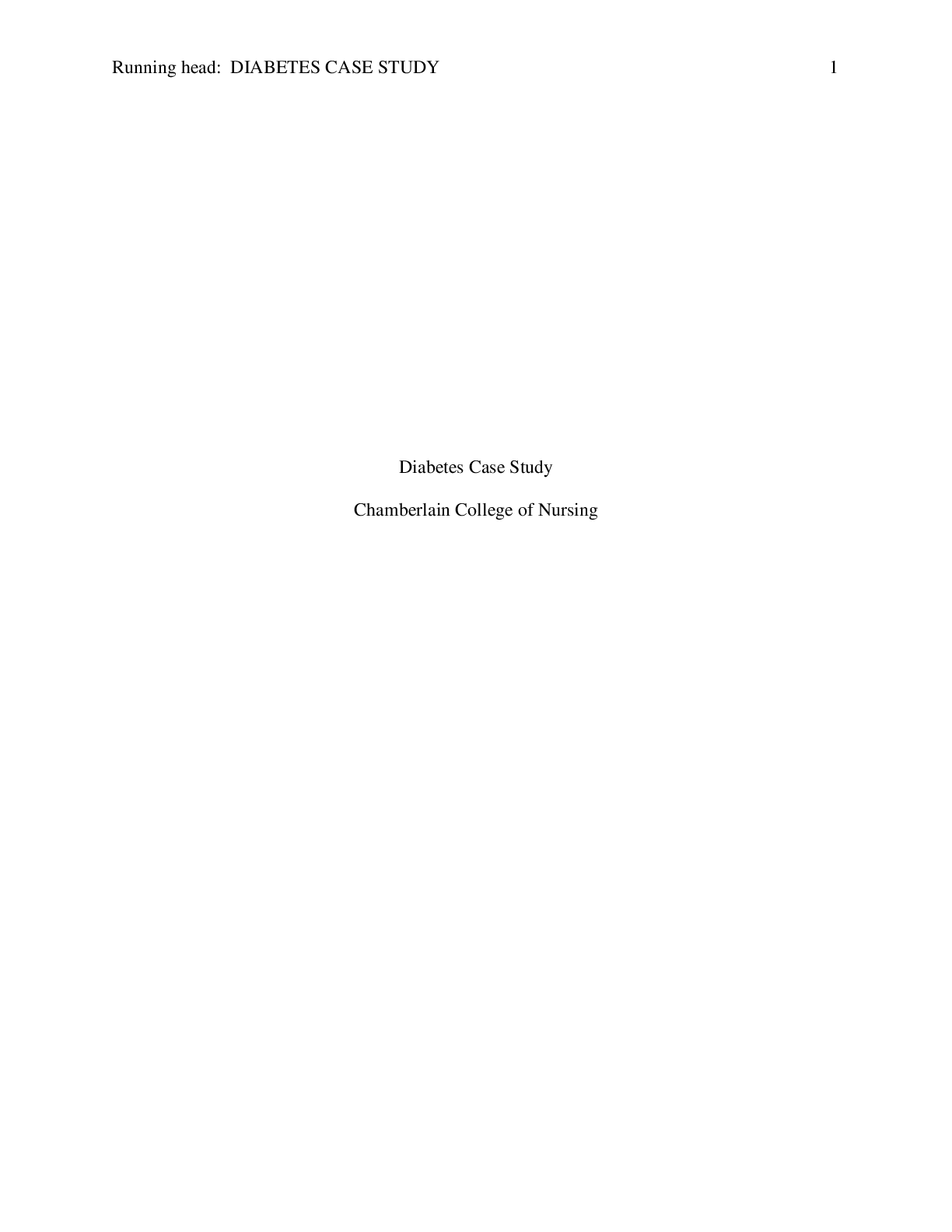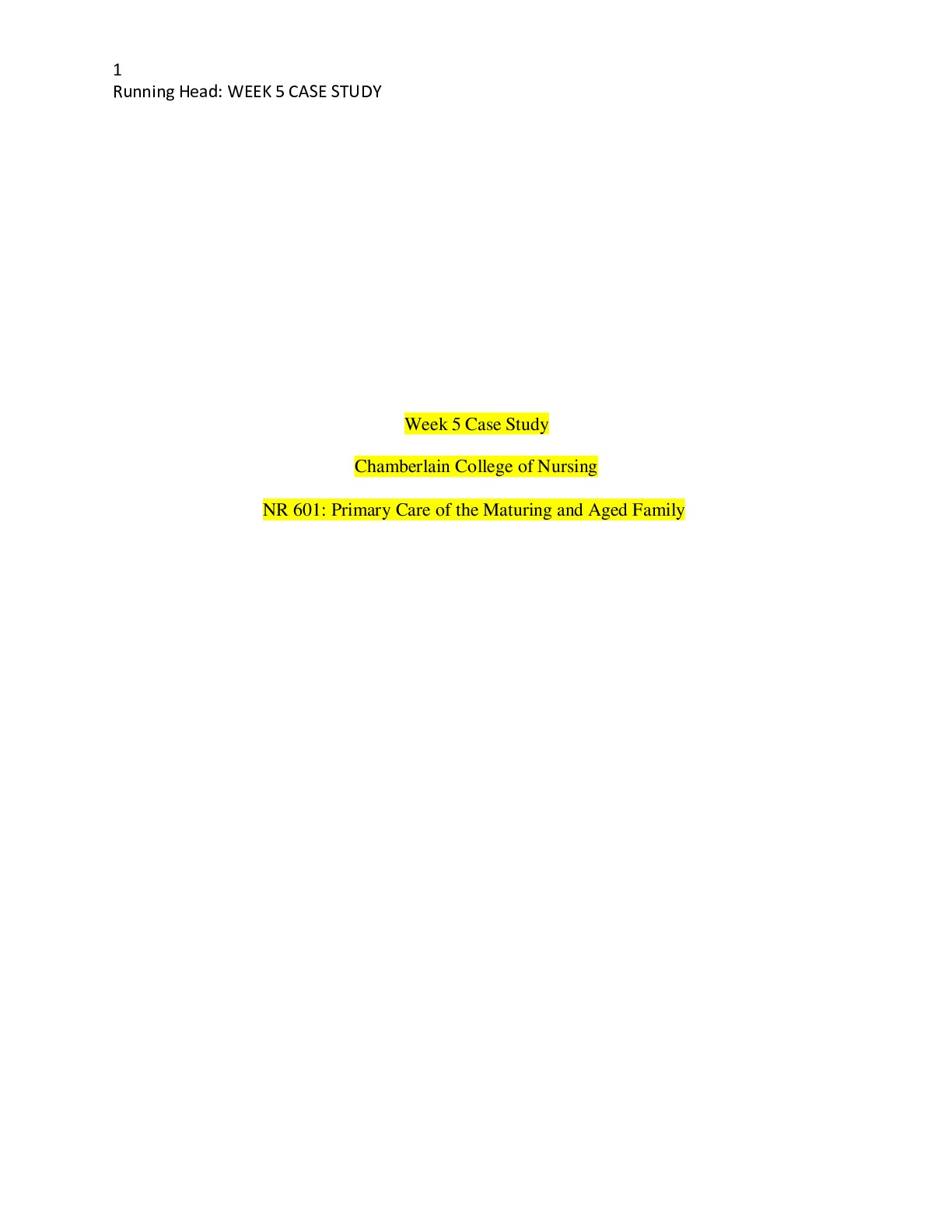*NURSING > CASE STUDY > NR 601 Week 5 Diabetes Case Study Assignment: Mrs G., 56-Year Old Hispanic Female (All)
NR 601 Week 5 Diabetes Case Study Assignment: Mrs G., 56-Year Old Hispanic Female
Document Content and Description Below
NR 601 Week 5 Diabetes Case Study Assignment: Mrs G., 56-Year Old Hispanic Female Week 5 Case Study In this case study I will be looking at the overall health of Mrs. G, a 55 year old Hispanic women.... She is coming into the office with multiple health complaints. After reviewing her history and doing my physical exam I have decided to diagnose Mrs. G with type 2 diabetes. This case study goes over this diagnosis, other secondary diagnoses, differential diagnoses, a treatment plan, as well as education I would provide to the patient. Assessment Primary Diagnosis- Type 2 diabetes with unspecified complications (E11.8) Pathophysiology- Type 2 diabetes is a chronic, multisystem, metabolic syndrome of gradual onset characterized by an insufficient body tissue response to insulin and impaired pancreatic production of insulin. Signs and symptoms of type 2 diabetes are fatigue, recurrent infections, prolonged wound healing, polyuria, polydipsia, weight changes, and polyphagia (Schub & Parks-Chapman, 2018). pertinent positive findings- Pt endorses polydipsia, polyphagia, weight gain, polyuria, fatigue. Physical exam shows obesity, 1 glucose in urine, small protein in urine, A1C of 6.9% (Schub & Parks-Chapman, 2018). pertinent negative findings- Glucose 95, no history of prediabetes, no family history of diabetes (Schub & Parks-Chapman, 2018). With the patient’s subjective findings and the A1C level of 6.9%, this patient meets the clinical diagnosis of type 2 diabetes (Schub & Parks-Chapman, 2018). rationale for the diagnosis- Because of the strong pertinent positives and associated lab work with this patient, I would definitely diagnoses her with type 2 diabetes. Her subjective and objective data all fit within the common symptoms of type 2 diabetes. Also, according to the ADA guidelines, any patient with am A1C of >6.5% meets the criteria for the diagnosis of type 2 diabetes (American Diabetes Association, 2019). Secondary Diagnosis- Hyperlipidemia, unspecified (E78.5) Pathophysiology- Hyperlipidemia is major cardiovascular risk factor that is caused by having abnormally high levels of different types of cholesterol in your blood. It increases the rate of atherosclerotic disease and can be caused by obesity, metabolic syndrome, thyroid dysfunction or familial traits (Kennedy-Malone, Plank, & Duffy, 2019). pertinent positive findings- TC 230, LDL 144, Triglycerides 232, obesity, new diagnosis of diabetes, father with high cholesterol (Kennedy-Malone, Plank, & Duffy, 2019). pertinent negative findings- Non-smoker, not hypertensive (Kennedy-Malone, Plank, & Duffy, 2019). This patient currently has high total cholesterol, high triglycerides and low HDLs. Even though the patient is a non-smoker and is hot hypertensive, she still meets the criteria for having hyperlipidemia (Kennedy-Malone, Plank, & Duffy, 2019). rationale for the diagnosis- The patients new diagnosis of type 2 diabetes is one of the main reasons I have added on the diagnosis of hyperlipidemia. When a patient has diabetes, the threshold for cholesterol levels lower and treatment is needed at different levels than in a patient without diabetes. Because the patient has mildly elevated cholesterol of 230 with LDLs of 144, along with her age and diabetes status, she is considered high risk and needs to be started on a moderate-intensity statin (Grundy, Stone, Bailey, Beam,... & Goldberg, 2018). Secondary Diagnosis- Obesity (E66.9) Pathophysiology- Obesity is defined as any persons having a body mass index (BMI) of greater than 30mg/m2. More than half of all adults in the United States are overweight or obese (Marcel, & Smith, 2018). pertinent positive findings BMI 33.37kg/m2 (Marcel, & Smith, 2018). pertinent negative findings- None (Marcel, & Smith, 2018). With the patient having a BMI of 33.37 and no negative findings, this patient will be diagnosed with obesity (Marcel, & Smith, 2018). rationale for the diagnosis- With a weight of 185 and a height of 62.5 inches it puts the patients BMI at 33.73kg/m2. Obesity is important to include as a diagnosis because type 2 diabetes is more likely to occur in obese patients and weight reduction strategies will be important for her overall health (Marcel, & Smith, 2018). Differential Diagnosis- Metabolic Syndrome (E88.81) pathophysiology- Metabolic syndrome is a constellation of metabolic abnormalities that increase a person’s chances of developing CVD and DM2. Diagnosis is considered when a patient presents with three of more of the following conditions: Abdominal obesity, hypertriglyceridemia, low HDL, hypertension, hyperinsulinemia (Schub, 2018). pertinent positive findings- Hypertriglyceridemia, Low HDLs (Schub, 2018). pertinent negative findings- No hypertension, no hyperinsulinemia (Schub, 2018). This patient currently has triglycerides of 232 which categorizes her as having hypertriglyceridemia, she also has an HDL of 38, which is below the recommended level of 50 [Show More]
Last updated: 1 year ago
Preview 1 out of 20 pages
Instant download
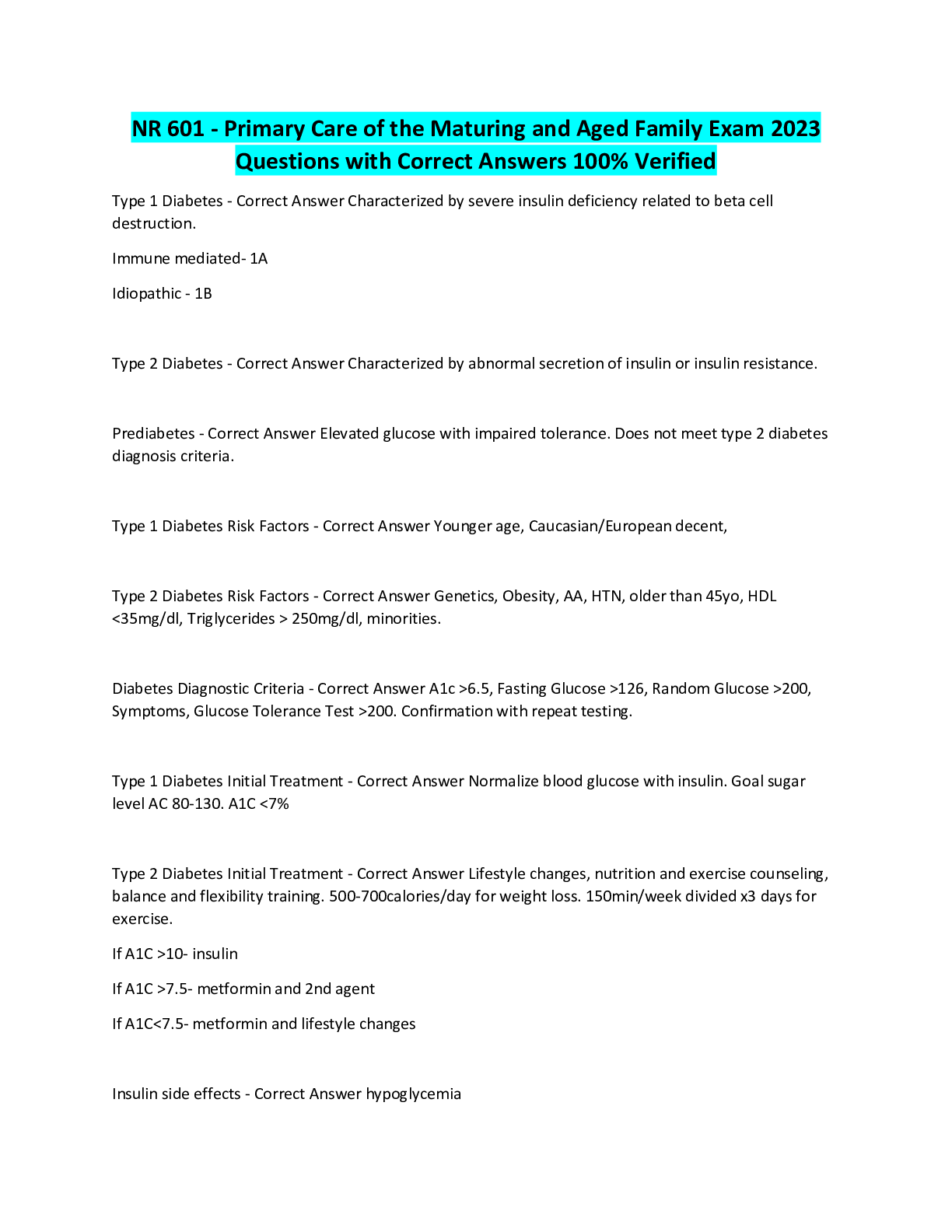
Buy this document to get the full access instantly
Instant Download Access after purchase
Add to cartInstant download
Reviews( 0 )
Document information
Connected school, study & course
About the document
Uploaded On
Apr 01, 2021
Number of pages
20
Written in
Additional information
This document has been written for:
Uploaded
Apr 01, 2021
Downloads
0
Views
36

